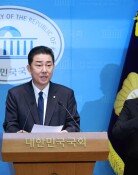Reorganization of government structure
Reorganization of government structure
Posted April. 08, 2022 07:53,
Updated April. 08, 2022 07:53
Ahn Chul-soo, the chair of the presidential transition team, said in a press conference on Thursday that it is desirable to focus on pressing issues rather than making rash decisions about the reformation of the government structure. Chairman Ahn further said that the Ministry of Gender Equality and Family, which President-elect Yoon Suk-yeol promised to abolish during his campaign, will be maintained as is for now, and the minister will be appointed and announced. This is intended for expediting the cabinet formation, while taking time to make decisions with regard to the reorganization of government structure.
Ever since the Republic of Korean government has been established in 1948, the governmental structure has been reformed about 60 times. Every time a new administration begins its term, it newly established ministries and abolished the ministries of the previous administration, changing the name and role of the ministries. For example, the Ministry of Information and Communication under the Roh Moo-hyun administration was dissolved under the Lee Myung-bak administration, was reinstated as the Ministry of Science, ICT, and Future Planning under the Park Geun-hye administration, and changed into the Ministry of Science and ICT under the Moon Jae-in administration. The people barely remember the name of ministries due to such frequent changes. This is in stark contrast to the United States, where the governmental structure remains unchanged since the establishment of the Department of Homeland Security in 2002 over the course of three changes in administration.
To overhaul the government structure from a long-term perspective, there must be serious discussion between the ruling and opposition party on the future of the nation. To pursue the reorganization of the government structure, with only 50 days ahead of the local elections, will ignite political strife. The abolishment of the Ministry of Gender Equality and Family that may have impact on voters is also an issue on which the ruling and opposition parties can hardly make compromise. In fact, President-elect Yoon put forward the abolishment of the Ministry of Gender Equality and Family to win the votes of male voters in their 20s during the presidential campaign and was criticized for exploiting gender conflicts to win the votes. The adverse effect is continuing.
Pending issues that the incoming administration needs to deal with inflation and North Korea’s nuclear and missile threats. Although it is necessary to review the possibility of changes to the government structure to effectively respond to the fourth industrial revolution and societal changes, this issue must not be a black hole that absorbs all other pending issues. It may be against this backdrop that the president-elect ordered the transition committee to “devise measures to stabilize the livelihoods of the people as the utmost priority of the new administration.” In light of the current structure of the National Assembly, where the ruling Democratic Party is taking up a majority of the seats, the reorganization bill would not easily pass the National Assembly’s approval without the Democratic Party’s approval and agreement. The two parties will be able to reach agreement only when the incoming administration’s agenda is to devise a plan to reorganize the government structure that will last, at least, 10 years.



![‘건강 지킴이’ 당근, 효능 높이는 섭취법[정세연의 음식처방]](https://dimg.donga.com/c/138/175/90/1/wps/NEWS/IMAGE/2026/01/18/133181291.1.jpg)



